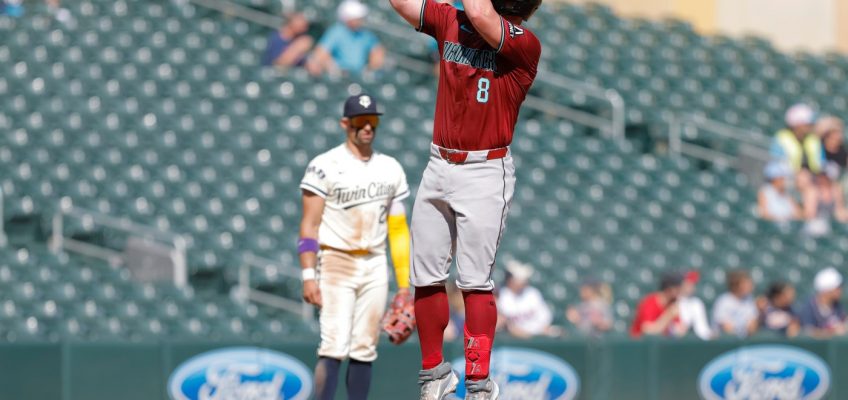Friday night’s contest between the Twins and Arizona Diamondbacks ended with a walk-off sacrifice fly. Saturday night’s game ended in extra innings. After two close, exciting tilts, it didn’t come as much of a surprise that Sunday’s game was a tight one as well, with some late intrigue.
But after leaving the bases loaded in both the eighth and ninth innings, the Twins fell 6-4 in the series finale to Arizona on Sunday afternoon at Target Field.
“It’s a series where you look up and you feel like you’re in every single game throughout the entire game. I just said it to our guys,” manager Rocco Baldelli said. “One or two runs, that actually equates to one or two plays. It’s just one or two plays here and there where, over the course of a full game, nine innings, it all adds up.”
The Twins’ eighth-inning rally fell short when pinch hitter Carson McCusker — in for Mickey Gasper, who had hit a home run in his previous at-bat — grounded out to short. An inning later, Austin Martin singled with a pair of outs, giving the Twins (65-84) some late hope. Kody Clemens then walked and Luke Keaschall was hit by a pitch before Matt Wallner flew out to right to end the game.
“I just feel like they kind of executed the pitches and that’s about it, but I felt good up there and confident,” Wallner said.
The two teams traded late runs on Sunday with the Twins getting solo home runs in the seventh and eighth from Wallner and Gasper, and the Diamondbacks (75-75) responding with a run of their own in the top of the seventh and top of the eighth.
The Twins had fallen behind in the fourth when James McCann crushed an 89-mph fastball from Bailey Ober left over the heart of the plate for a three-run home run and never led after that.
“He’s pretty aggressive at the plate, so I just left that one over the middle too much, knowing that he was going to swing,” Ober said. “Try to get him to chase a little bit, but I threw it for a strike and he put some damage on it. Overall, I felt like I threw good.”
It was the American League-leading 30th home run Ober has given up this season. In total, he gave up four runs on four hits in his six-inning outing, striking out nine.
The McCann home run gave Arizona the lead back after the Twins had briefly jumped ahead in the second, taking advantage of some shoddy Diamondbacks defense. Third baseman Jordan Lawlar committed a pair of errors — both with two outs — that opened the door for the Twins.
His fielding error put Gasper on base rather than ending the inning. Royce Lewis then scored when the very next batter, Edouard Julien, shot a single to left. Gasper would come around to score when Lawlar’s throw sailed past first baseman Tim Tawa later in the inning.
“We’re coming up short right now, but we’re out there competing and giving ourselves an opportunity to win,” Baldelli said. “You need to have that mentality that the game is always within reach and it has been.”
Related Articles
Twins rally to tie game but fall to Diamondbacks in 10th inning
Kody Clemens continues to carve out role for himself moving forward
Twins rally after bullpen surrenders ninth-inning lead
Twins: Christian Vazquez returns from ‘scary’ infection in shoulder
Twins’ experiment on base paths is paying off




